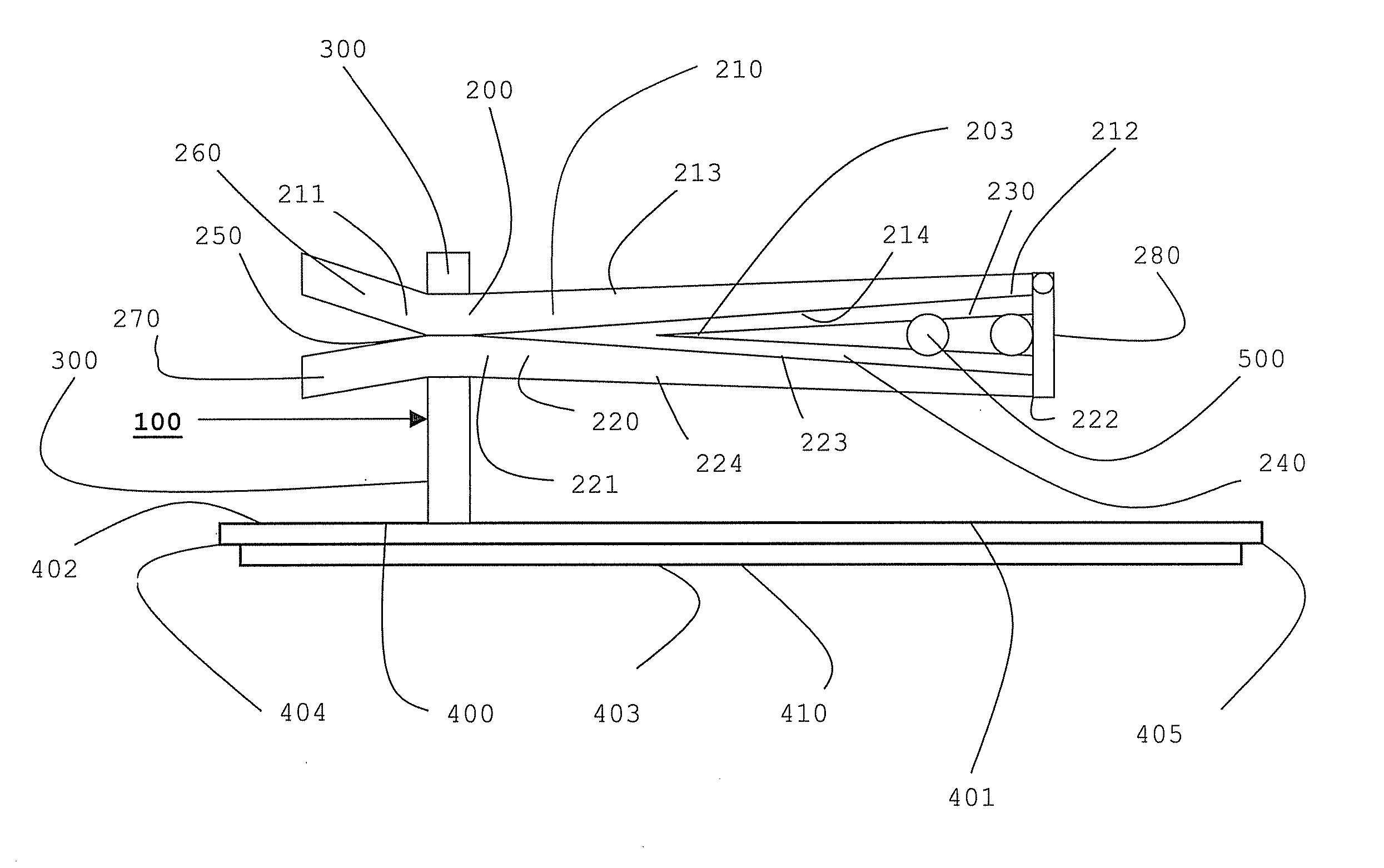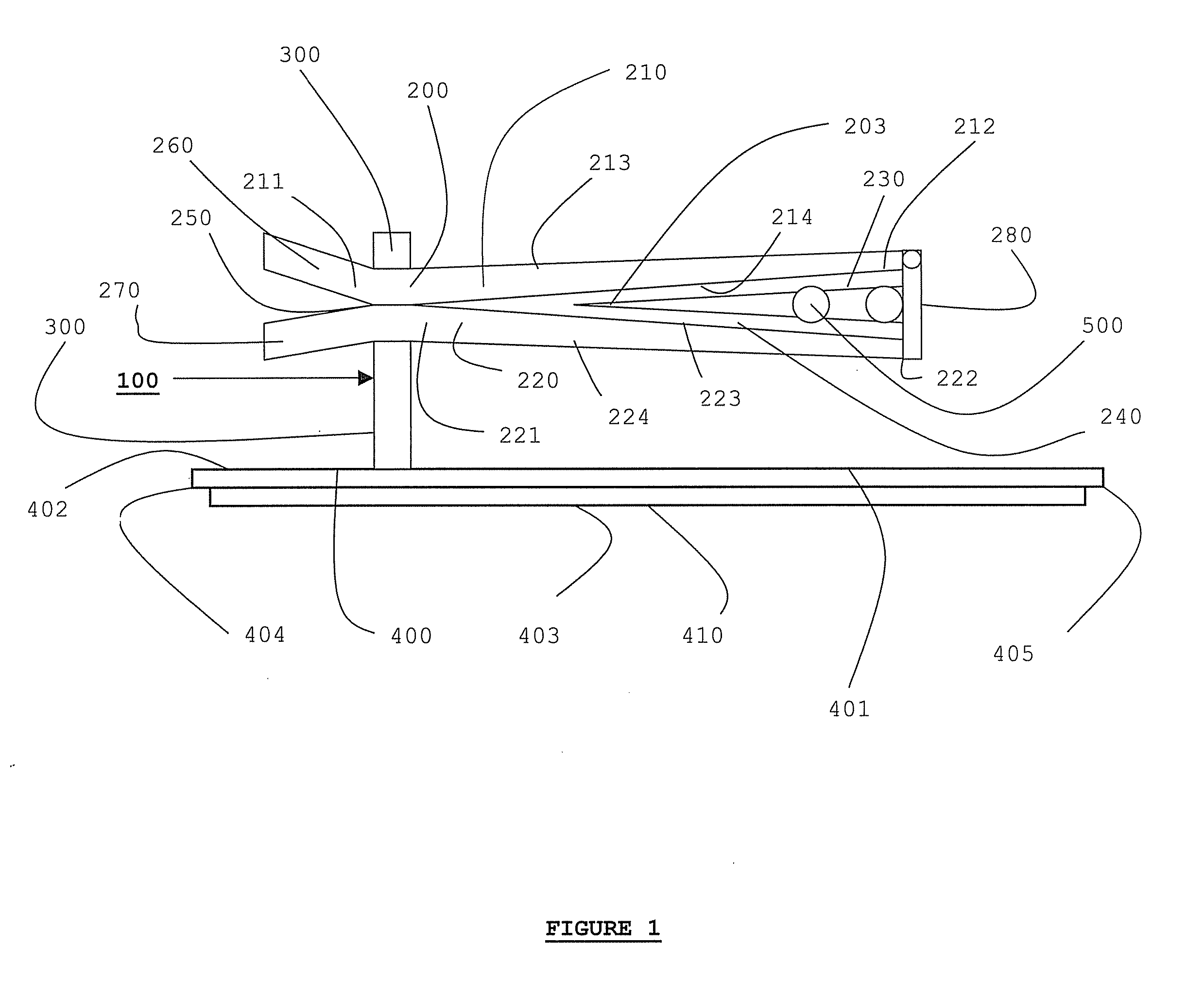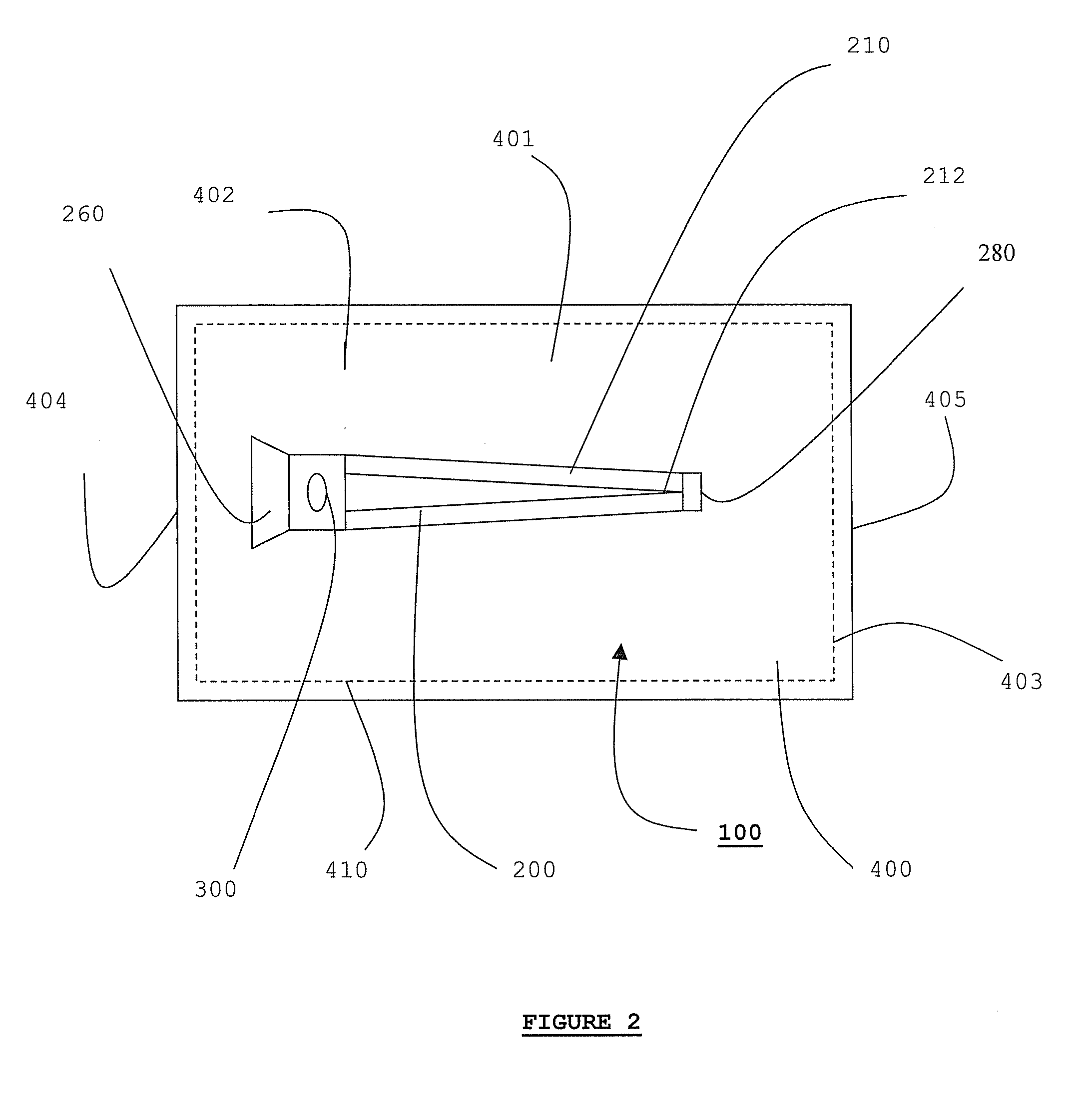Method and apparatus to secure life support lines to an infant during neonatal care
a technology for life support lines and infants, which is applied in the direction of protective clothing, infusion needles, other medical devices, etc., can solve the problems of multiple side effects, inability to secure the life support lines of infants during neonatal care, and the unfamiliar and sterile environment of neonatal facilities, so as to achieve the effect of holding and maintaining the medical tubing and sensors
- Summary
- Abstract
- Description
- Claims
- Application Information
AI Technical Summary
Benefits of technology
Problems solved by technology
Method used
Image
Examples
first embodiment
of the Fastening Means
[0032]FIGS. 1 and 2 further disclose one preferred embodiment for the fastening means 400. In all of the embodiments, the two-part clip 200 attaches to a fastening means 400 (either directly or through the rotatable member 300). Under the embodiment shown in FIGS. 1 and 2, the fastening means 400 is an essentially flat panel 401. This flat panel 401 is essentially square or rectangular in shape and includes a top side 402 and corresponding bottom side 403. However, the flat panel 410 can be any geometric shape, as long as it provides a sufficient amount of surface area to affix to the parent 700. Moreover, the flat panel 410 can have an ergonomic shape sufficient to mirror the curvature of a parent's chest area.
[0033]As shown in FIG. 2, the flat panel 401 includes a first edge 404, a corresponding second edge 405, a top edge 406 and a corresponding bottom edge 407. The flat panel 401 can be made of any light-weight and rigid material, but is preferably made of ...
second embodiment
of the Fastening Means
[0035]In addition to having a flat panel 401 as the fastening means 400, FIGS. 4 through 6 offer an alternative embodiment to help secure the apparatus 100 to the parent 700. More specifically, FIGS. 4 through 6 show how the fastening means 400 can be affixed to an article of clothing 701 (and / or strap system) worn by the parent 700. As shown in FIG. 4, this second embodiment of the fastening means 400 includes a pair of jaws 420. The pair of jaws 420 includes a first jaw member 421 and a corresponding second jaw member 422. Both jaw members 421 and 422 can include a plurality of teeth 423 that assist in affixing the jaws 420 onto an article of clothing 701.
[0036]FIG. 5 provides a side view of the preferred orientation of the pair of jaws 420 employed as a fastening means 400. As illustrated in FIG. 5, both jaw members 421 and 422 of the pair of jaws 420 are preferably connected through a second spring action hinge 450. The second spring action hinge 450 is pos...
PUM
 Login to View More
Login to View More Abstract
Description
Claims
Application Information
 Login to View More
Login to View More - R&D
- Intellectual Property
- Life Sciences
- Materials
- Tech Scout
- Unparalleled Data Quality
- Higher Quality Content
- 60% Fewer Hallucinations
Browse by: Latest US Patents, China's latest patents, Technical Efficacy Thesaurus, Application Domain, Technology Topic, Popular Technical Reports.
© 2025 PatSnap. All rights reserved.Legal|Privacy policy|Modern Slavery Act Transparency Statement|Sitemap|About US| Contact US: help@patsnap.com



